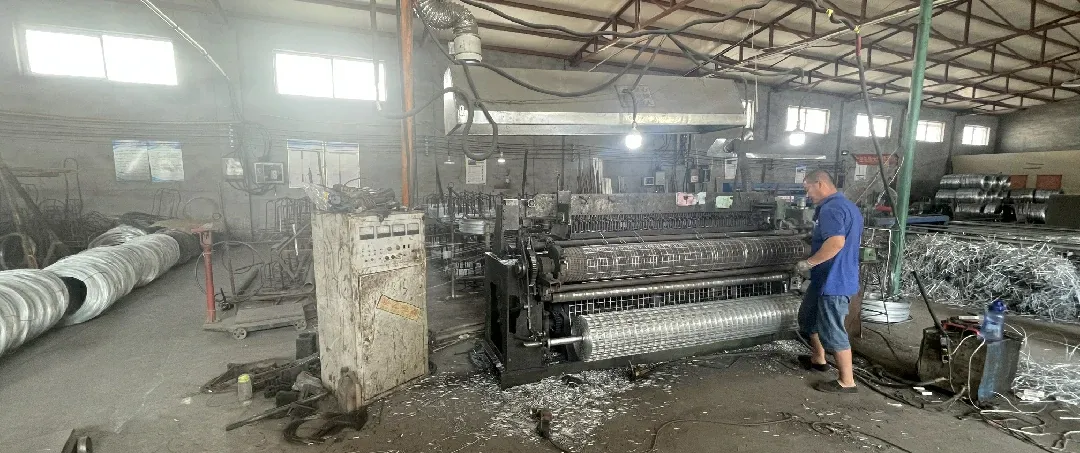chain link fence sections
Understanding Chain Link Fence Sections A Comprehensive Guide
Chain link fences are among the most popular types of fencing solutions across residential, commercial, and industrial applications. Known for their durability, cost-effectiveness, and versatile design, chain link fences provide security and visibility simultaneously. One of the crucial aspects of understanding chain link fences is getting to know the various sections that make up the entire fencing system. In this article, we will explore the different components of chain link fence sections, their features, benefits, and how they contribute to a functional and efficient fencing system.
What is a Chain Link Fence?
Before delving into the specifics of chain link fence sections, it's essential to understand what a chain link fence is. A chain link fence consists of woven steel wire that forms a diamond pattern and is supported by metal posts and railings. The interwoven wire creates a strong barrier that is both flexible and resistant to damage from the elements, making it ideal for various applications.
Components of Chain Link Fence Sections
1. Chain Link Fabric The fabric is the most recognizable part of a chain link fence. It is typically made from galvanized or vinyl-coated steel wire, providing corrosion resistance and enhanced aesthetics. The fabric is available in different heights and mesh sizes, allowing for customization based on security needs and desired visibility. For instance, a smaller mesh size is often used in areas requiring higher security, while larger mesh sizes may be suitable for residential applications.
2. Fence Posts The fence posts are the backbone of the chain link fencing system, providing the necessary support and stability. They are usually made from galvanized steel to protect against rust and corrosion. Posts are available in various sizes and thicknesses to accommodate different heights and purposes of the fence. The three main types of posts in a chain link fence are terminal posts (end and corner), line posts, and tension posts. Terminal posts are used at the ends or corners of the fence, while line posts are placed at regular intervals along the length of the fence.
3. Rails Rails are horizontal components that connect the posts and provide additional support to the chain link fabric. Typically, there are two types of rails used in chain link fences top rails and bottom rails. The top rail helps maintain the fence’s shape and deters sagging, while the bottom rail provides a more finished look and can help keep the fabric from dragging on the ground.
4. Tension Wire Tension wire is an additional element used in chain link fences, primarily to enhance stability. It is attached at the bottom and, in some cases, the top of the fence and helps to tighten the installation as it secures the fabric in place. This is especially useful in taller fences where winds might cause movement or sagging.
chain link fence sections

5. Fasteners and Accessories Fasteners such as ties and brackets are essential for securely attaching the chain link fabric to the posts and rails. They are typically made from galvanized steel to ensure weather resistance. Accessories may also include gates, height extensions, privacy slats, and barbed wire, each designed to serve specific functional or aesthetic purposes.
Benefits of Chain Link Fences
1. Durability and Longevity One of the most significant advantages of chain link fences is their durability. Constructed from resilient materials like galvanized steel, they withstand harsh weather conditions and resist rusting, ensuring a long-lasting solution.
2. Low Maintenance Chain link fencing requires minimal maintenance compared to wooden or vinyl fences. Regular checks for integrity and occasional cleaning can keep it looking good for years.
3. Cost-Effective Chain link fences offer an economical solution without sacrificing quality. Their simple installation process can save on labor costs, making them a suitable option for budget-conscious projects.
4. Visibility and Security The open weave of chain link fences allows for visibility while providing a significant deterrent against unauthorized entry. This makes them ideal for secure perimeters around properties.
Conclusion
Chain link fence sections are an integral part of creating a secure and effective fencing solution. Understanding the components, their functions, and the benefits they provide is essential for anyone considering this type of fencing. Whether for residential, commercial, or industrial purposes, chain link fences stand out as a reliable choice due to their adaptability, affordability, and overall sturdiness.
-
Space-Saving Chain Fence Hacks Vertical Gardening with Cyclone MeshNewsJul.16,2025
-
Innovations in Iron Nail Wire Production for Modern ConstructionNewsJul.16,2025
-
Creative Uses of Wire Netting Fence in Modern Landscape DesignNewsJul.16,2025
-
Barbed Wire Fence Innovations in Anti-Climb TechnologyNewsJul.16,2025
-
Architectural Uses of Umbrella Nails for Aesthetic Roof DesignsNewsJul.16,2025
-
Architectural Uses of Razor Barbed Wire in Secure Urban DesignNewsJul.16,2025




